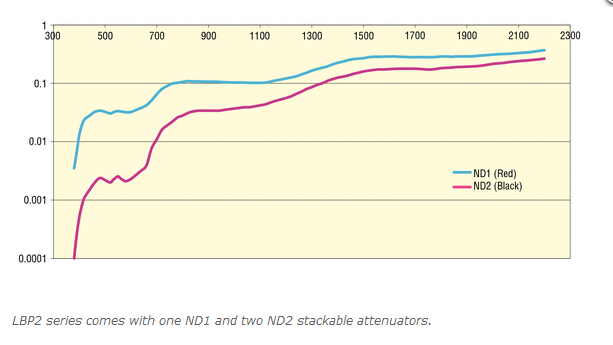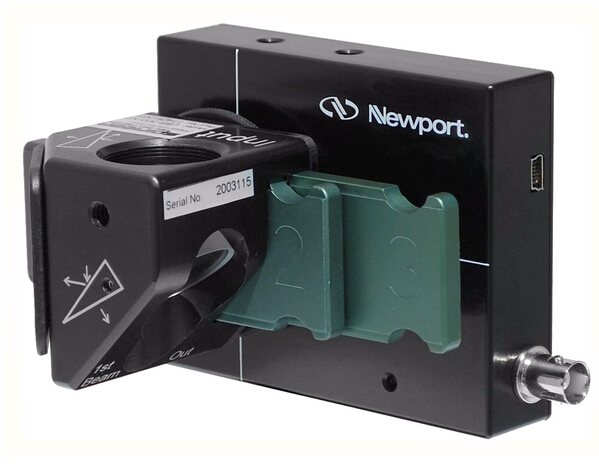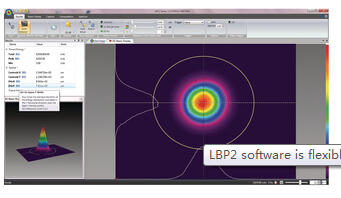
The new LBP2 series laser beam profilers are available with a visible (190 - 1100 nm) CCD or a phosphor coated (1440 - 1605 nm) CCD camera. Both the cameras are available in the 640x480 array low resolution or the 1600x1200 array high resolution versions.
The Phosphor coating technology allows you to view NIR (1440 - 1605 nm) lasers and light sources to measure with LBP2-IR and LBP2-HR-IR . The anti-Stokes phosphor coating produces visible photons at a rate roughly the square of the input signal. This non-linearity or Gamma is corrected in the software\'s Gamma Correction function. Thus an accurate, linear image of the beam profile is obtained permitting standard, cost effective analysis of NIR beams. Note that the measured laser spot size will be slightly larger than the actual size, due to the use of phosphorescence.
Each laser beam profiler comes with stackable neutral density filters (one ND1 and two ND2 filters) with a 19 mm clear aperture, 1 inch-32UN (C-Mount). The damage threshold for these ND filters is 5 W/cm2.

The LBP2-SAM Series beam sampler attachment allows you to measure laser beams with diameters up to 15mm and powers ranging from 10 mW to ~400 Watts. The beam sampler is designed so that the preferential polarization selection effect of a single wedge is cancelled out and the resulting beam image is polarization corrected to restore the polarization components of the original beam. The beam sampler operates by reflecting the incoming beam from the front surfaces of a pair of wedges through 90 degrees into the camera. Approximately 99% of the beam is transmitted through the beam sampler with 0.01% passed on to the camera. A set of adjustable ND filters are provided to make final intensity adjustments to the beam before it reaches the camera imager. Also, two samplers can be coupled in series providing up to a 10-8 attenuation.

The LBP2 software interface offers a broad range of functions and ISO approved quantitative results with an ease-of-use software user interface. The patented UltraCal algorithm, guarantees the data baseline or “zero-reference point” is accurate to 1/10 of a digital count on a pixel-by-pixel basis. ISO 11146 requires that a baseline correction algorithm be used to improve the accuracy of beam width measurements.
